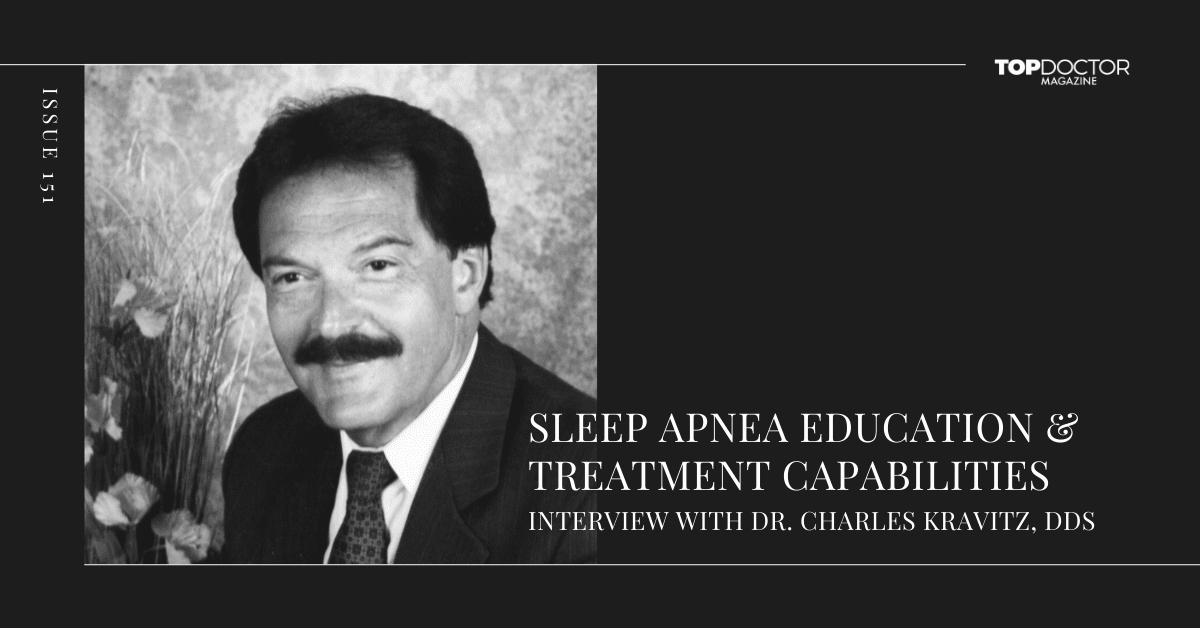If someone asked you what is the most vital, life-sustaining human nutrient, would you say food? No. A person can live 45 to 65 days without eating. How about water? Surprisingly, no. The human body is composed of up to 60% water. We can survive as long as three days without drinking water.
The correct answer is oxygen. Every living organism and organ system requires a constant oxygen flow to maintain its normal function. How long do you think you would live without oxygen?
A victim of a sleep breathing disorder such as Obstructive Sleep Apnea (OSA) may spend half of their sleeping time not breathing (apnea= without breath). Hypoxia is an insufficiency of oxygen. Sleep apnea is connected to strokes, heart attacks, diabetes, dementia and even cancer. The more fortunate may experience just a reversible case of weight gain.
Hypoxia is a killer. Fortunately, there are effective and patient-friendly treatments for OSA, and it may surprise many to find those solutions in the dentist’s office. Dr. Charles Kravitz, DDS, is working hard to bring that expertise to more and more dental professionals and save more lives.
Dr. Charles Kravitz, DDS
Dr. Kravitz is a dentist trained in sleep breathing disorders. He teaches other dental professionals how to treat sleep apnea and incorporate treatment modalities into their practices. His focus on sleep apnea came from personal experience.
“I lost two people close to me due to sleep apnea,” he said. “This got me interested in finding out what I could do to help.”
Dr. Kravitz believes it is essential to educate both the patient and the practitioner, the former to understand and accept their condition, and the latter to have more knowledge and resources for effective treatment.
“The Latin word for teacher is doctor. I am a teacher,” he said.
Dr. Kravitz is affiliated with Sleep Group Solutions, which provides airway diagnostic technology and education for physicians and dentists who treat sleep apnea and other airway disorders.
He was also the editor-in-chief and headline writer for The Sleep Magazine, which goes to dental specialists and medical people involved with sleep all over the country and online. In addition, he created the newsletter called Sleep On It.
About Obstructive Sleep Apnea (OSA)
OSA is a cessation of breathing for 10 seconds or more, although pauses may amount to 30 seconds or even longer. This insufficient intake of oxygen, called hypoxia, can occur 30 or more times during an hour. As a result, people with OSA may only ingest enough oxygen for half their sleep time.
“They have pauses where they don’t breathe at all,” Dr. Kravitz explained. “It can last for 10 seconds to two or three minutes. This is obviously dangerous. And can you imagine how much oxygen would be coming into your lungs and distributed to your organs for that long a time? People have actually died in their sleep because there is no oxygen coming in, and they had a stroke or heart attack.”
About 25% of men and 10% of women have OSA. It can affect all ages, including children, especially people over 40-years-old or overweight. A Harvard Health report says that there are 18.9 million undiagnosed cases of OSA, an unsettling statistic that speaks about the imperative nature of education.

OSA Treatments, Old and New
CPAP (i.e., Continuous Positive Airway Pressure) is a standard treatment for OSA. A CPAP machine covers the nose and mouth strapped to the patient’s head and a tube connected to a machine continuously forces air past blockages while the patient sleeps. Although effective, the treatment is uncomfortable, and numerous patients dislike it.
“The majority of patients that were offered CPAP were not going to wear it or tried it and did not tolerate it. They say It’s uncomfortable, they can’t turn over in their bed, it looks like a Darth Vader mask and it makes some people feel like they’re drowning,” Dr. Kravitz pointed out.
Intraoral Devices
Fortunately, improved intraoral devices are now available, which are adjusted to open the airway while the patient is asleep.
“The intraoral appliance is custom-designed for each patient,” Dr. Kravitz said. “It is comfortable, FDA-approved and less expensive than the CPAP.”
Medical insurance coverage is a big factor in obtaining this service.
Patients are enthusiastic about intraoral devices, as they quickly report improvements in their lives, such as lower fatigue levels, weight loss and increased energy.
Sleep Coordinator Academy
Dr. Kravitz stated in a recent article that fewer than 4% of licensed American dentists are qualified to practice sleep medicine. He is working to increase this number through his education programs, speaking engagements, close to 400 published articles and his work with Sleep Group Solutions.
Dr. Kravitz also created a new role for the Dental practice- Sleep Coordinator—and a Sleep Coordinator Academy for training. The Sleep Coordinator may be the dentist or an auxiliary who assists the dentist by handling most of the work with sleep apnea patients that the dentist cannot do because of their busy schedules.
“Sleep Coordinators become professionals who work within dental offices and focus solely on screening and treating sleep apnea patients,” Dr. Kravitz explained. “I developed an 18-lesson sleep coordinator course. Students can have a background in dentistry or medicine or come from other backgrounds. It’s a new, wonderful career saving people’s lives.”
A medical background is not required to become a Sleep Coordinator. However, students must be dedicated to the 18-lesson curriculum, as it has all the details they need to be successful in the profession.
The Academy teaches screening techniques, a comprehensive understanding of OSA and the sleep cycle, the treatment options and how to talk to patients to ensure they understand their condition and gain their buy-in. He also helps them find placement after they complete the program.
“We help them find a dental or medical office. In many cases, these graduates will know more about this subject from this course than the person they’re working for. They can help train other doctors. As independent contractors, they can choose their hours,” Dr. Kravitz explained.
ABOUT SNORING
Snoring is not something to laugh about. It is a condition to be taken seriously. Snoring is a warning sign that there is something a lot more serious to investigate because it points out that there is a partial blockage of the airway.
A Parting Summary
Sleep apnea is dangerous; it is prolific and not enough dental professionals are prepared to handle the millions of people in need of treatment. Dr. Kravitz’s solution is to educate as many professionals as possible in treating and managing this serious disease.
He even goes a step further by creating a new category of professionals—the Sleep Coordinator—to focus solely on sleep apnea. They help the practitioners add much-needed services to their practices. He also teaches others to teach the Academy program to further spread the knowledge.
Dr. Kravitz’s efforts are paying off in an improved quality of life, more productive lives and countless lives saved.






0 Comments